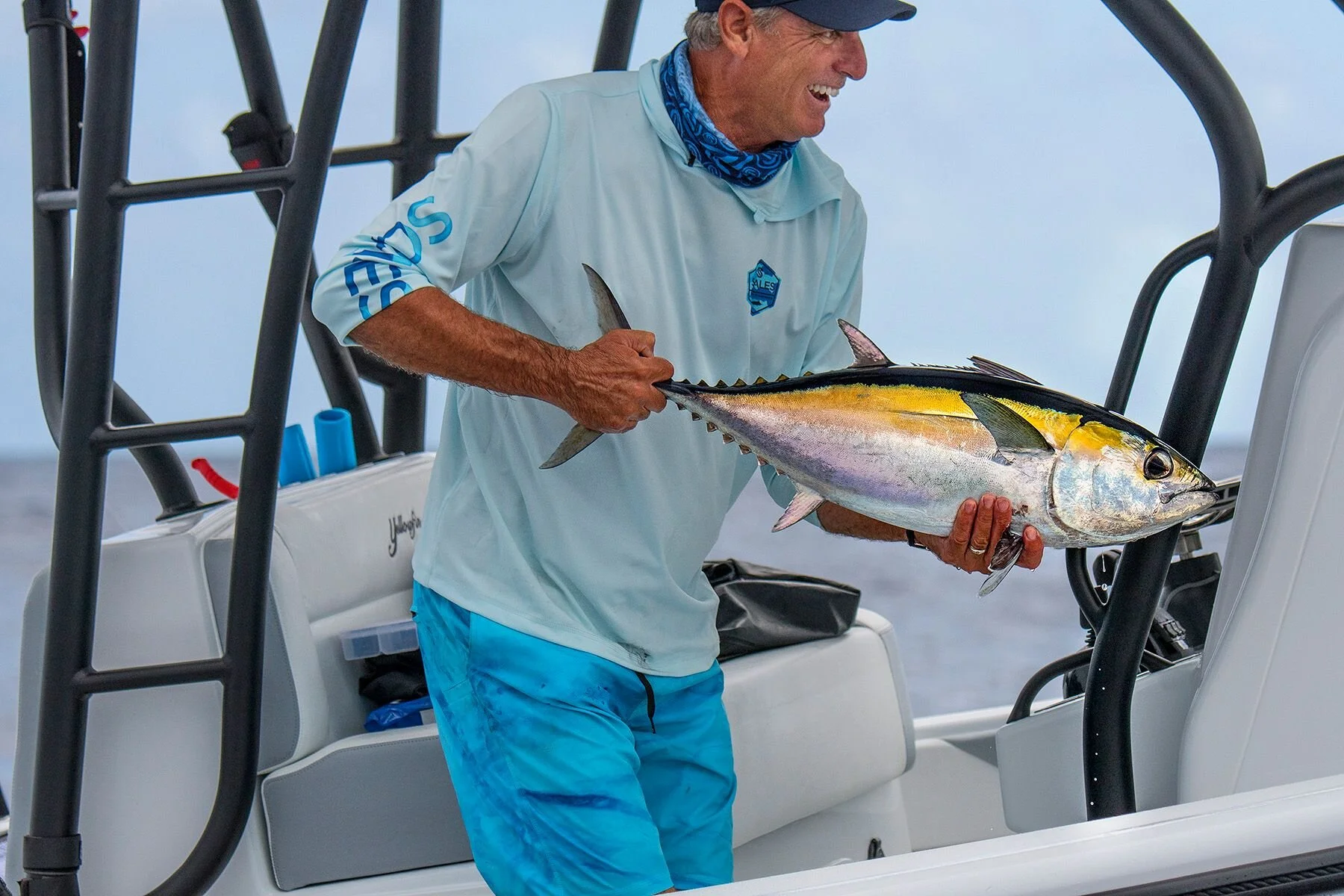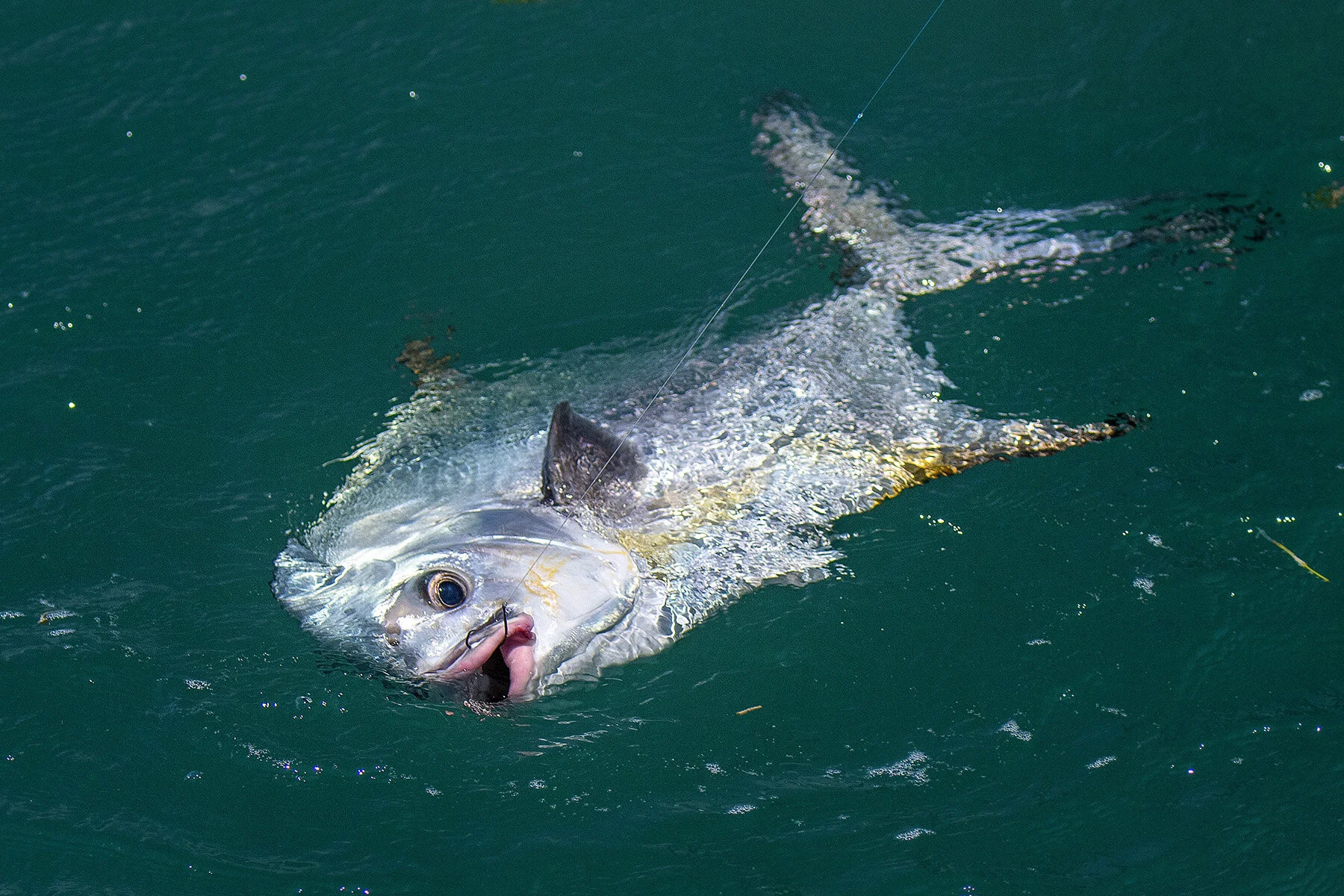5 Things You Need to Know to Catch More Swordfish
written by Evan Anderson
In episode of 1 of Into the Blue’s 2019 season, experts Steve Rodger and Scott Walker sit down for a deep dive into some of their techniques for swordfishing. These two have spent their lives chasing all sorts of ocean game covering the ocean with their triple Mercury Marine motors, and both agree that swordfish provides one of the best deep-sea fishing experiences. “It’s the biggest fish you can catch in the keys, really, except for a shark,” says Walker. Rodger adds, “I enjoy it so much because you never know what you’re gonna catch, or what’s gonna happen.” Together, these two full-time guides will walk us through 5 things you need to know to catch more swordfish.
“You never know what you’re gonna catch, or what’s gonna happen...”
1. Bait
Most fishermen use squid on the ends of their lines when pursuing swordfish. But Walker, frustrated with how easily squid tears, has developed his own method for rigging up a swordfish lure. Using the gear he got from West Marine he fashions a custom bait, “We have blackfin tuna, we have a lot of dolphin,” says Walker, “So I started taking parts of those fish and making tougher strip baits.” Walker opts to use dolphin belly (dolphin fish, aka mahi-mahi, not the happy ocean mammals you’re probably picturing) for this demonstration and sows it together, placing a dolphin fish egg sack right in the middle. The egg sack acts as an attractant. When the fish bites down on the lure, the eggs get released into the water, attracting more swordfish. “They just go crazy over it,” Walker says with a grin.
To finish it off, Walker puts a couple stitches through the hook to keep it stable. “The most important thing about swordfishing is not having a spinning bait,” says Walker as he rigs his lure, “You want to leave your bait down there for 45 mins to an hour. And if it’s spinning and tangling, you’ve just wasted an hour of your life.” A simple green rubber hood with eyes, available at West Marine, goes on top and completes the illusion.
Squid still makes for a fine swordfish bait. The problem is with how soft they are. Swordfish will frequently slash at baits with their bill, which will tear a squid in half with ease. Walker sits on his deck wearing his unattainable Scales clothing and demonstrates how to avoid this by, “[attaching] the body and head to the hook so that if he slashes it he can’t just tear it in half without coming back to hook himself.” He adds, “We never gave up on squid. The more durable baits just give me more confidence.” Squid are also commonly caught in the same areas as swordfish. Says Rodger, “That’s how you know you’re in the right spot, when you’re catching squid and you’re swordfishing. That’s their favorite thing to eat.”
“We never gave up on squid. The more durable baits just give me more confidence.”
2. Strikes
Chasing swordfish is sometimes referred to in the Florida Keys as “sword-wishing” because often you spend a lot of time fixated on the end of your rod without seeing a big strike. But the problem here is that that’s what most people are looking for, a BIG strike. When swordfish strike, it’s actually quite a small, sometimes barely noticeable movement in the end of your rod. This is a result of the depth you are fishing at and the level of the currents. “For us in the keys,” Walker explains, “we’re dealing with 2 to 4 knots of current, so we’re dealing with 6 to 12 pounds of lead before you put a bait on there, and then you add 2,000 to 3,000 feet of line in the water with the gulf stream bowing it out, and whatever currents are below that…” With all that pressure, weight, and current, your rod is going to be totally bent already. And, as Rodger adds, “You’re fishing so deep that the transfer of that bite from the bottom to your rod tip is very subtle.”
3. Currents
This particular area has a pretty steep learning curve to navigating and fishing it. In the Gulf Stream, the are very strong and that’s why the boys at Into The Blue prepare themselves with Mercury Marine engines to face the ocean. “You hang up on the bottom,” Rodger warns, “and there’s a good chance that you’re gonna break, not just your line off, but break your rod or break something [else].” Swordfish utilize this current by gently swimming against it, waiting for flying fish to drift toward them.
This isn’t the case in every swordfishery, and thus you should familiarize yourself with the depths and currents that you will be fishing in, as these will affect how you set up your line. Speaking about fishing in the North East, Rodger comments, “They have a lot less current to deal with, so what I saw from my time fishing there was that the leader is the same, the bait is the same, the light placement is the same, the only thing different is a lot lighter lead.” Walker adds that “in Louisiana, there’s pretty much no current at all, so you can do pretty much whatever you want.”
4. Tangles
“If you’re not tangled, you’re fishing,” says Rodger. Tangled fishing line is perhaps the greatest form of torture an angler can experience, short of leaving their rod on the hood of the car. Walker demonstrates here that you can avoid this by rigging the weights on your line a certain way. “You move the sinker about 150ft. from the bait.” He explains, “You get that long leader...use a lead stick for weight...At 150ft usually the fish still hasn’t made his move to the surface, so you can get that thing unclipped. And then when the jump sequence starts, you have the lead taken off.” Having your weights too close together will inevitably cause a massive tangle and take keep your line out of the water. So spacing them out as Walker mentions here will save you from all that frustration.
@ SE Multimedia 2019
5. Fish the Bottom
Swordfish are deep-sea fish by nature, thus the deeper you can fish the better. According to Walker, “When your bait’s on the bottom, that’s where the swordfish are and that’s when you’re gonna get your fish.” As mentioned earlier, in the Gulf Stream they are fishing in 2 to 3 thousand feet of water, which leads to a lot of fish. Wherever you look for swordfish, remember to get that bait to the bottom.
So if you’re looking for high seas adventure, look no further than swordfishing. And check out the full episode below to listen to Scott Walker and Steve Rodger go over these 5 tips and more on S11:E1 of “Into the Blue”.




















